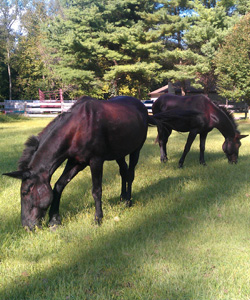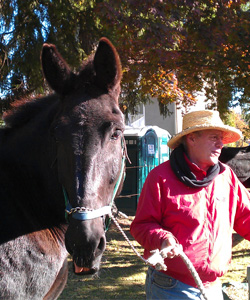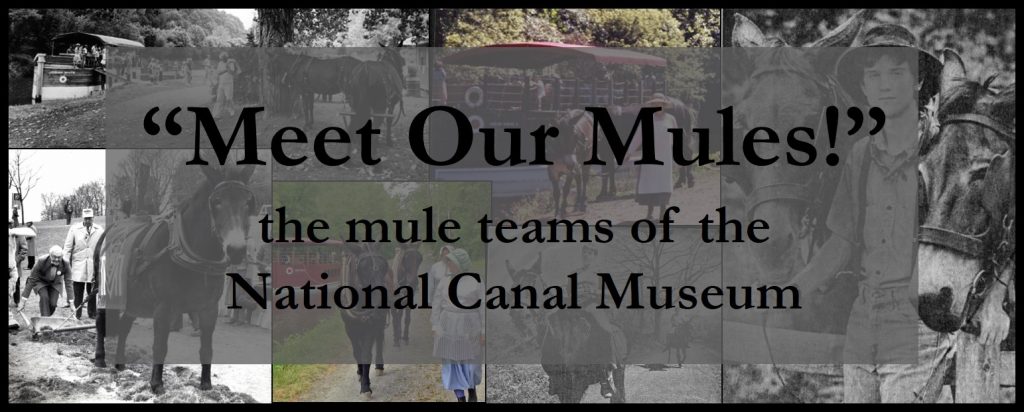Two Mules
The two friendly mules who pull the Josiah White II canal boat are named Hank and George. We bought them at a Lancaster County auction in January, 2006.

Hank and George are not brothers, though they look very much alike. They are Percheron mules. Their mothers were Percheron mares, a breed of draft or work horses that originated in France. Their fathers were donkeys. That’s the mix that produces a mule: horse + donkey = mule. George was raised on a farm in Texas, while Hank is a Missouri mule.
 Training mules to pull a canal boat takes time. They have to learn to walk in tandem — one behind the other. They have to learn how to get the boat moving by leaning on the towline and taking gradual steps. They have to learn who’s the leader in the tandem and who’s the follower. It’s not hard for them to work as a team because Hank and George are very attached to each other; one gets worried when he can’t see the other.
Training mules to pull a canal boat takes time. They have to learn to walk in tandem — one behind the other. They have to learn how to get the boat moving by leaning on the towline and taking gradual steps. They have to learn who’s the leader in the tandem and who’s the follower. It’s not hard for them to work as a team because Hank and George are very attached to each other; one gets worried when he can’t see the other.
Hank and George are good workers, but they don’t have to work nearly as hard as their 19th- and early 20th-century predecessors did. A two-mule team back then pulled up to 120 tons for 18 hours a day, six days a week. They travelled up to 35 miles a day, resting briefly at locks and while their boats were being loaded or unloaded. At night, they were bedded down in stables that were common along the canals.
 Healthy, well-cared for mules can work 15 to 18 years. Our previous team, Dixie and Daisy, pulled the Josiah White II for 15 years.
Healthy, well-cared for mules can work 15 to 18 years. Our previous team, Dixie and Daisy, pulled the Josiah White II for 15 years.
Why do we use mules on the canal? A big reason is that they won’t try to get into the water if they are thirsty or hot. Horses will do that, mules won’t. Mules are generally thought of as more intelligent than horses. They pace themselves when working, so they don’t get exhausted; they don’t overeat or drink too much water, and they avoid eating poisonous plants. A mule that is sick, injured, or too hungry, thirsty, or tired to work cannot be pushed beyond its endurance — they just stop. This is probably the origin of “stubborn as a mule,” but we like to say it is really “smart as a mule.”
Hank and George aren’t the first mules at the NCM!
Click on the image below to “Meet Our Mules!” going all the way back to 1978.























